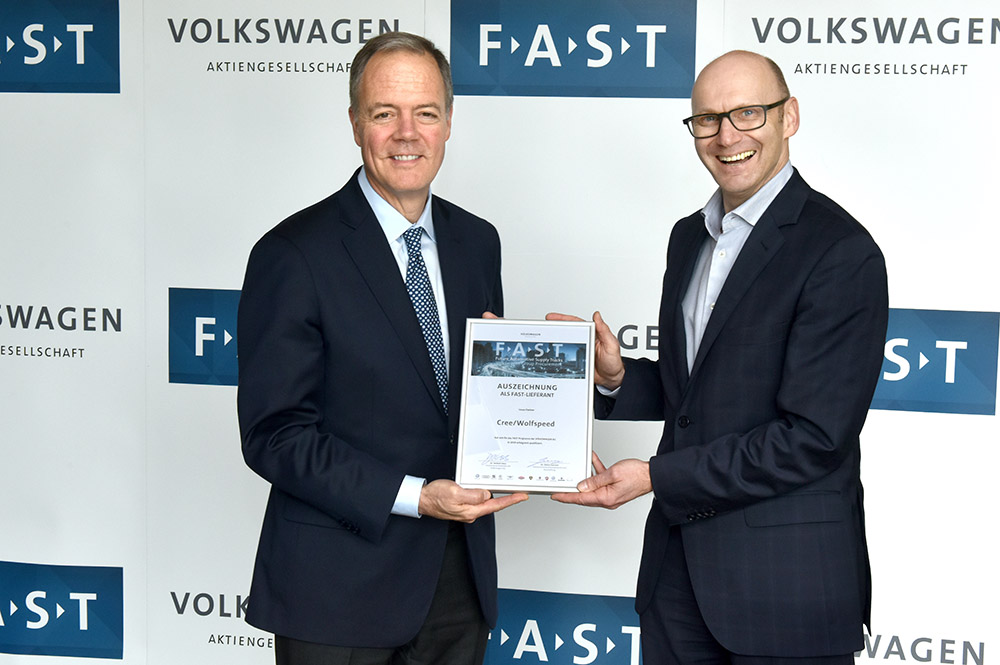Cree announced that it has been selected as the exclusive silicon carbide partner for the Volkswagen Group’s “Future Automotive Supply Tracks” Initiative (FAST). The aim of FAST is to implement technical innovations more efficiently and effectively to realize global vehicle projects.
As the Volkswagen Group aims to increase its electric vehicle production, the automobile manufacturer is seeking for effective network. “Our FAST partners are our strategic partners, each of them outstanding in their respective field. We want to shape the automotive future together,” said Mr. Michael Baecker, Head of Volkswagen Purchasing Connectivity.

(Right: Cree CEO, Gregg Lowe; left: Michael Baecker, Head of Volkswagen Purchasing Connectivity. Image: Cree)
This agreement connects two simultaneous revolutions: the automotive industry’s move from internal combustion engines to EVs and the growing adoption of silicon carbide in the semiconductor market. It also drives innovation for both parties, enabling the Volkswagen Group to better serve their customers.
Cree reported expansion of its silicon carbide capacity in the beginning of May, followed by the partnership with the Volkswagen group. The use of silicon carbide accelerates the automotive industry’s transformation to electric vehicles, enabling greater system efficiencies that result in electric cars with longer range and faster charging, while reducing cost, lowering weight and conserving space.
“Cree’s technology is at the heart of the dramatic change underway in EVs, and we are committed to supporting the automotive industry as it transitions to more efficient, higher performing silicon carbide-based solutions,” said Gregg Lowe, CEO of Cree. “We are very honored to be partnering with the Volkswagen Group. VW Group is a global power in the automotive field with a strong commitment to electric vehicles, and this partnership will leverage the advantages of silicon carbide to enable longer driving distances, shorter charge times and improved efficiency. We look forward to helping them deliver on the automobiles of the future.”





 CN
TW
EN
CN
TW
EN






